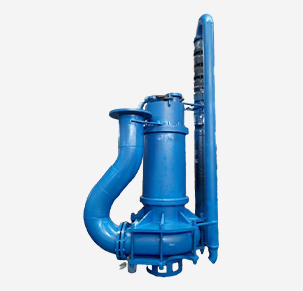Czech
- Afrikaans
- Albanian
- Amharic
- Arabic
- Armenian
- Azerbaijani
- Basque
- Belarusian
- Bengali
- Bosnian
- Bulgarian
- Catalan
- Cebuano
- Corsican
- Croatian
- Czech
- Danish
- Dutch
- English
- Esperanto
- Estonian
- Finnish
- French
- Frisian
- Galician
- Georgian
- German
- Greek
- Gujarati
- Haitian Creole
- hausa
- hawaiian
- Hebrew
- Hindi
- Miao
- Hungarian
- Icelandic
- igbo
- Indonesian
- irish
- Italian
- Japanese
- Javanese
- Kannada
- kazakh
- Khmer
- Rwandese
- Korean
- Kurdish
- Kyrgyz
- Lao
- Latin
- Latvian
- Lithuanian
- Luxembourgish
- Macedonian
- Malgashi
- Malay
- Malayalam
- Maltese
- Maori
- Marathi
- Mongolian
- Myanmar
- Nepali
- Norwegian
- Norwegian
- Occitan
- Pashto
- Persian
- Polish
- Portuguese
- Punjabi
- Romanian
- Russian
- Samoan
- Scottish Gaelic
- Serbian
- Sesotho
- Shona
- Sindhi
- Sinhala
- Slovak
- Slovenian
- Somali
- Spanish
- Sundanese
- Swahili
- Swedish
- Tagalog
- Tajik
- Tamil
- Tatar
- Telugu
- Thai
- Turkish
- Turkmen
- Ukrainian
- Urdu
- Uighur
- Uzbek
- Vietnamese
- Welsh
- Bantu
- Yiddish
- Yoruba
- Zulu
Telephone: +86 13120555503
Email: frank@cypump.com
Pro . 16, 2024 13:07 Back to list
Rubber Component Manufacturers for Vertical Slurry Sump Pumps and Their Applications
The Importance of Rubber Parts in Vertical Slurry Sump Pumps
Vertical slurry sump pumps play a crucial role in various industrial applications, particularly in mining, metallurgy, and wastewater treatment. These pumps are designed to handle abrasive and corrosive materials, making them essential for transporting slurries—particularly those containing solid particles suspended in a liquid. However, the efficiency and longevity of these pumps greatly depend on the quality of their components, especially the rubber parts.
Understanding Vertical Slurry Sump Pumps
Vertical slurry sump pumps are submersible pumps that are positioned upright in a sump or pit. They are specifically designed for pumping thick and heavy slurries from one location to another. Unlike traditional pumps, which may become compromised when handling abrasive materials, these pumps are engineered to withstand harsh conditions. This durability is significantly bolstered by the quality of the rubber components used in their construction.
The Role of Rubber Parts
Rubber parts in vertical slurry sump pumps serve multiple critical functions
1. Sealing One of the primary functions of rubber parts is to provide effective sealing within the pump assembly. Proper sealing is essential to prevent leaks, which can lead to loss of efficiency and potential environmental hazards. High-quality rubber seals ensure that the pump operates smoothly and efficiently under various conditions.
2. Wear Resistance Slurries often contain abrasive particles that can wear down metal components. Rubber impellers, wear plates, and liners help to mitigate this wear and extend the life of the pump. The flexibility of rubber allows it to absorb shocks and vibrations, reducing the risk of damage to more rigid parts of the pump.
3. Corrosion Protection Many slurries are chemically aggressive, which can lead to corrosion of metal parts. Rubber, particularly specialized formulations that resist chemical degradation, provides an effective barrier against corrosive substances, ensuring that pumps can perform reliably over time.
4. Hydraulic Efficiency The design and quality of the rubber components can influence the hydraulic efficiency of the pump. For instance, well-engineered rubber impellers can enhance the flow characteristics, reducing energy consumption and improving overall performance.
vertical slurry sump pump rubber parts factories

Choosing the Right Rubber Parts
When selecting rubber parts for vertical slurry sump pumps, it is essential to consider factors such as the type of slurry being pumped, the operating conditions, and the temperature range. Different rubber materials offer varying degrees of resistance to abrasion, chemicals, and temperature.
Some commonly used rubber materials include
- Natural Rubber Known for its excellent tensile strength and elasticity, natural rubber is suitable for general applications but may not withstand extreme chemicals. - Nitrile Rubber This type offers good resistance to oils and solvents, making it ideal for applications with oily slurries. - Neoprene Known for its versatility, neoprene is resistant to both mechanical wear and chemical damage, making it a popular choice for many industrial applications.
- EPDM (Ethylene Propylene Diene Monomer) Offers excellent resistance to heat, ozone, and aging, making it ideal for high-temperature environments.
- Viton This synthetic rubber stands out for its exceptional chemical resistance and high-temperature capabilities, often used in the most demanding applications.
The Role of Manufacturers
The quality of rubber parts directly correlates to the performance of the pumps. Therefore, selecting reputable factories that specialize in producing rubber components for vertical slurry sump pumps is critical. These manufacturers should utilize advanced materials, employ rigorous quality control measures, and have a clear understanding of the specific requirements for slurry applications.
Conclusion
In conclusion, the significance of high-quality rubber parts in vertical slurry sump pumps cannot be overstated. From ensuring proper sealing to enhancing wear resistance and hydraulic efficiency, these components are integral to the operational success of slurry pumping systems. By choosing the right materials and sourcing from reliable manufacturers, industries can significantly enhance the performance and longevity of their pumping solutions, ultimately leading to increased productivity and reduced operational costs.
-
ISG Series Vertical Pipeline Pump - Chi Yuan Pumps Co., LTD.|High Efficiency, Energy Saving, Low Noise
NewsJul.30,2025
-
ISG Series Vertical Pipeline Pump- Chi Yuan Pumps|High Efficiency&Low Noise
NewsJul.30,2025
-
ISG Series Vertical Pipeline Pump-Chi Yuan Pumps Co., LTD.|High Efficiency&Energy Conservation
NewsJul.30,2025
-
ISG Series Vertical Pipeline Pump - Chi Yuan Pumps Co., LTD.|Advanced Hydraulic Design&Energy-Efficient Solutions
NewsJul.30,2025
-
ISG Series Vertical Pipeline Pump - Chi Yuan Pumps Co., LTD.
NewsJul.30,2025
-
ISG Series Vertical Pipeline Pump - Chi Yuan Pumps Co., LTD.|energy-efficient fluid handling&industrial durability
NewsJul.30,2025










